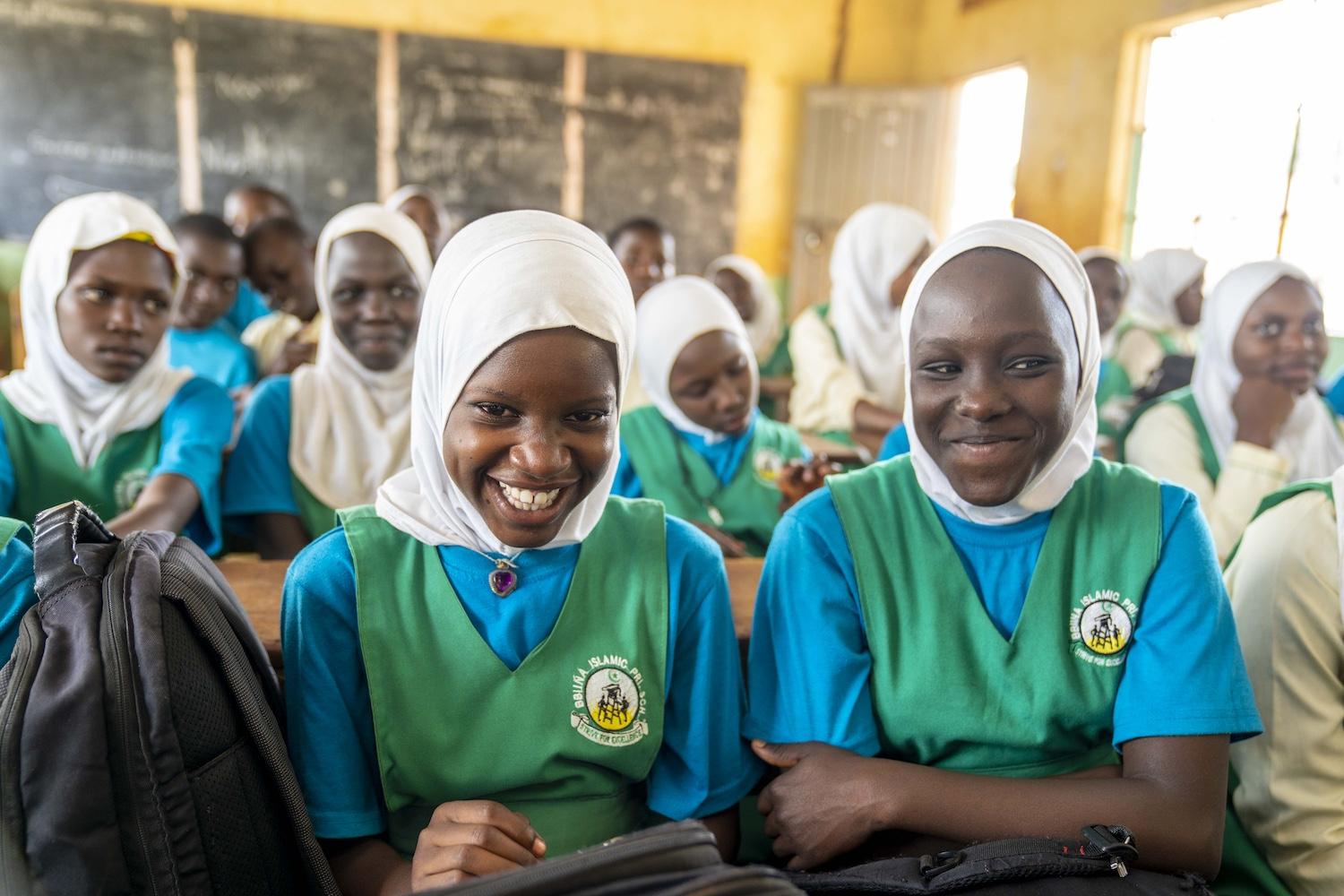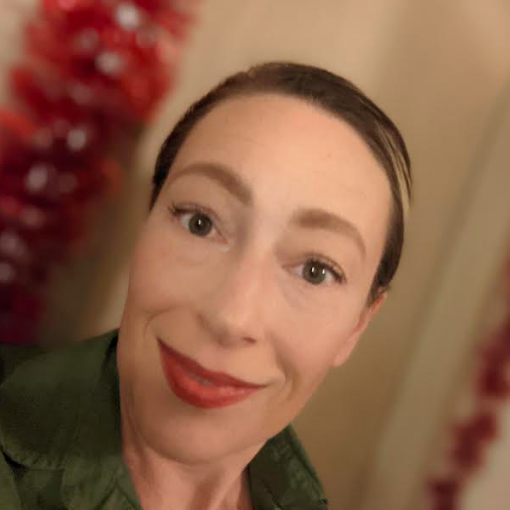
Girls in Girl Up Initiative Uganda's in-school clubs learn practical life skills that support self-awareness and confidence-building, but just because the programs are run in schools doesn't mean lessons are taught in an academic style. Students are typically learning through play. (Image courtesy of Girl Up Initiative Uganda.)
“The most powerful method in empowering girls is to start with their personal journeys and personal empowerment,” Monica Nyiraguhabwa, executive director and co-founder of the Girl Up Initiative Uganda, told TriplePundit. “You cannot empower a girl unless she's in touch with herself.”
The initiative — which focuses on improving educational, financial and health outcomes for young women — creates spaces where girls can dig into who they are outside of gender stereotypes and societal expectations and see their own worth. In that way, they develop the confidence to speak up, become leaders and take control over their own futures.
A deeply patriarchal environment is what inspired the initiative’s conception. Girls’ education isn’t prioritized in Uganda, Nyiraguhabwa said. Socially, girls are taught to be humble and look down when speaking. Many community members see girls who speak up as arrogant, she said. Nyiraguhabwa wanted to give girls the power to be who they are, instead of who the community tells them to be.
“For me, it was about challenging the narrative around having a girl child, because having a girl child in my community … it wasn't a blessing,” Nyiraguhabwa said. “But when you have a boy, it calls for celebration.”
The Girl Up Initiative runs a number of programs for Ugandan youth in different life stages and situations. Its flagship Adolescent Girls Program hosts in-school clubs for girls ages 9 to 15. Girls participate in a variety of activities through the clubs, including climate-smart projects that benefit their nutrition and hygiene, such as learning how to sew reusable menstrual pads and grow food in the school's garden, Nyiraguhabwa said.
“It’s not an academic class. It's a fun way of learning through play, and yet, you're actually contributing to addressing issues of degradation,” she said. “For example, the girls are involved in issues of nutrition, but they are addressing those issues in a playful, fun manner that allows them to show up as their full selves [rather] than showing up as learners in a classroom.”
While the projects teach practical life skills, they also act as a much-needed vehicle for deeper self-awareness and confidence-building. “The beauty of the club is that it allows girls to just have that safe space where they come together to dissect and talk about the things and offer each other support and mentorship,” Nyiraguhabwa said.
The projects also break down some of the barriers between students and teachers, who often assume girls will have lower educational performance than boys, Nyiraguhabwa said. The initiative works with teachers to replace gender stereotypes and negative narratives like that with equitable approaches in the classroom, which Nyiraguhabwa credits with sustaining the program’s success. Teachers are also challenged to use inclusive language as a way of overcoming outdated textbooks that portray gender-based stereotypes, such as only men being doctors and only women being nurses.
Of the topics covered in the Adolescent Girls Program, sexual and reproductive health is one that is particularly controversial in Uganda, she said. But the program was able to avoid backlash by keeping the instruction age appropriate, starting with menstrual hygiene for younger girls and building on that as they get older.
“Working in schools is very tricky and challenging,” Nyiraguhabwa said. “Any mistake you make, you can be chased out of school, so you have to ask yourself, ‘How do we play safe so that we offer this information but also offer it in a way that we do not land in trouble, for example, but make sure that girls get the knowledge, the information, the tools, the resources that they need?’”
Girls who are able to stay in school and complete the Adolescent Girls Program graduate to the Big Sisters Program, which focuses on further leadership training and advocacy.
The Girl Up Initiative’s approach evolved over its 12 years in operation, learning that it can’t work with girls in isolation. The community has to grow, as well, including teachers, parents and other community members.
“It's one thing for a girl to be empowered,” Nyiraguhabwa said. “It's another for her to survive in a deeply patriarchal environment or school, so it affects the outcomes.”
The imitative received pushback from critics who see the focus on girls as unfair to boys. But the program doesn’t exclude boys, it works with them by teaching them positive masculinity and how to be allies to girls through its Boy Champions Program, Nyiraguhabwa said. “But we do not want to forget that the reason for what we do, it’s because of the girls,” she said.
Both the Adolescent Girls Program and the Boy Champions Program are making a difference in how girls see themselves and how boys see girls. Of the more than 2,000 girls who attended the program in 2024, 80 percent said they were more confident speaking up and asserting their personal agency — up from 54 percent at the beginning of the program, Nyiraguhabwa said. As a result, the number of girls taking on various leadership roles increased by 13 percent after a year in the program. By the end of the year, 28 percent of girls had a better grasp of gender equality by the end of the year, and 24 percent of the more than 1,300 boys in the program reported the same.
Among girls, 71 percent reported an improved understanding of gender-based violence, up from 56 percent at the start of the year, Nyiraguhabwa said. As for the boys, 79 percent said the program improved their understanding, up from 55 percent. Regarding sexual and reproductive health and rights, 22 percent of girls and 37 percent of boys reported increased understanding and practices.
Despite the promising results, because the program is school-based, school fees can be a barrier to participation. Fees are a determining factor for many girls when it comes to finishing school in Uganda. The initiative offers some scholarships, but there simply aren’t enough funds to go around.
“Of the over 3,000 vulnerable adolescents reached each year, only a tenth are able to access school scholarships,” Nyiraguhabwa said. “The demand and need for support to ensure girls' retention and completion in school is strong, and there is therefore a significant gap that requires resources.”
But the Girl Up Initiative doesn’t leave out those who are unable to attend school. It also offers a workforce development program where girls can learn sewing and fashion design and start apprenticeships in mechanics, Nyiraguhabwa said.
“Economic empowerment for young women, especially those … who have not had a chance to go to more education, is a great pathway to addressing issues of poverty, addressing issues of violence, addressing issues of unwanted teenage pregnancies or unwanted pregnancies in general,” she said.
Whichever program a girl is in, the ultimate goal is the same: empowerment.

Riya Anne Polcastro is an author, photographer and adventurer based out of Baja California Sur, México. She enjoys writing just about anything, from gritty fiction to business and environmental issues. She is especially interested in how sustainability can be harnessed to encourage economic and environmental equity between the Global South and North. One day she hopes to travel the world with nothing but a backpack and her trusty laptop.














